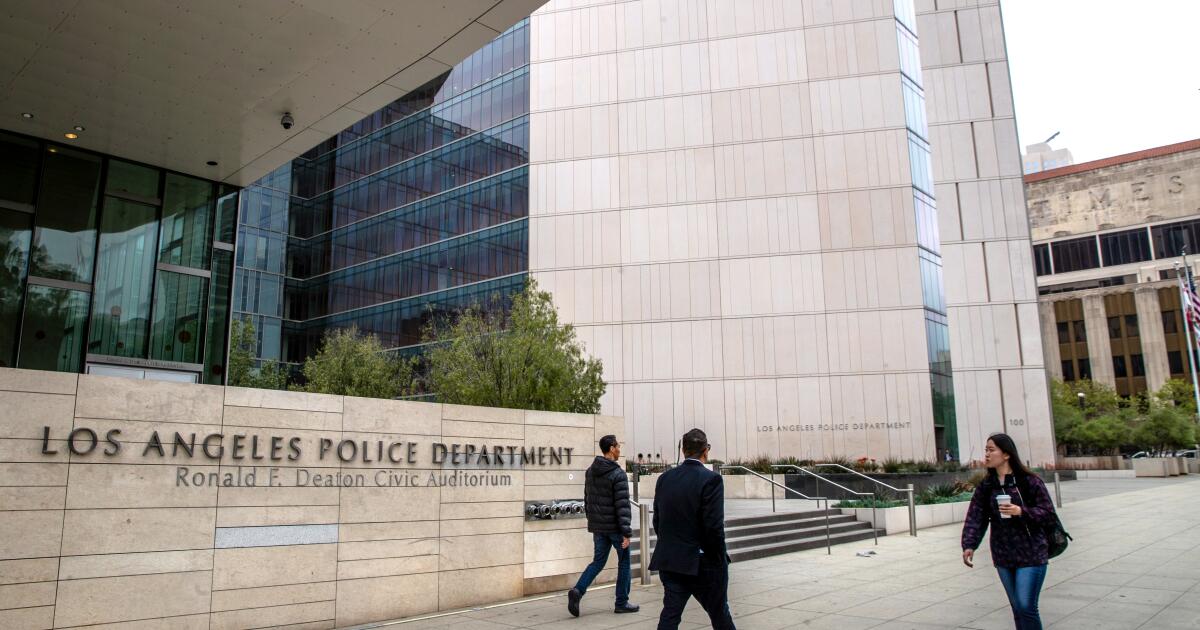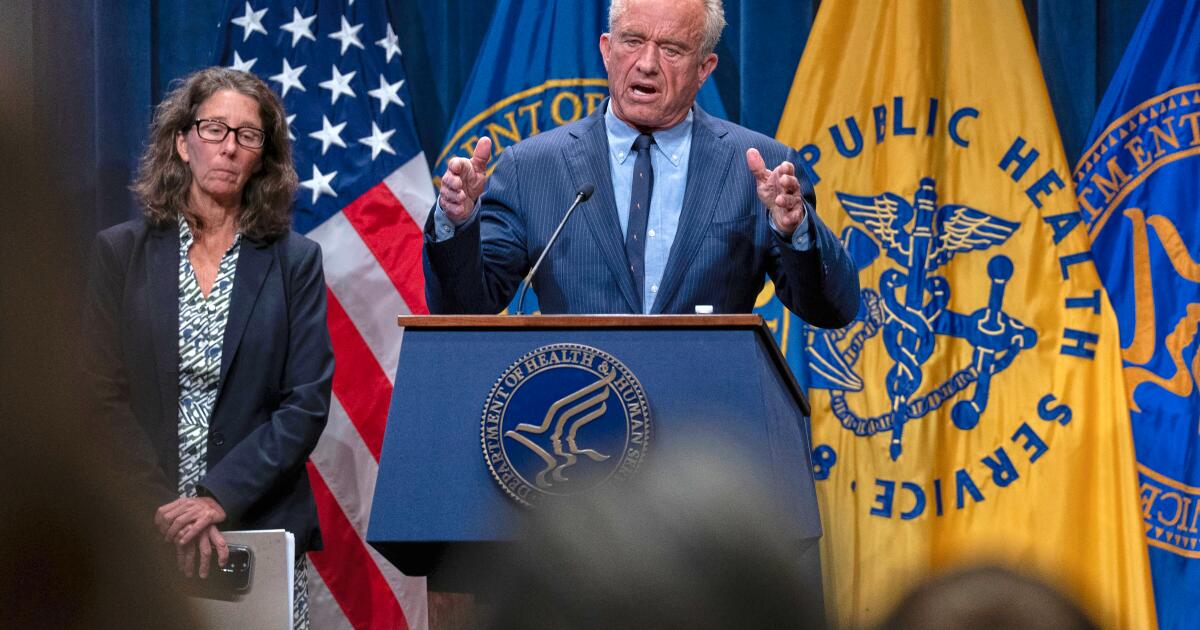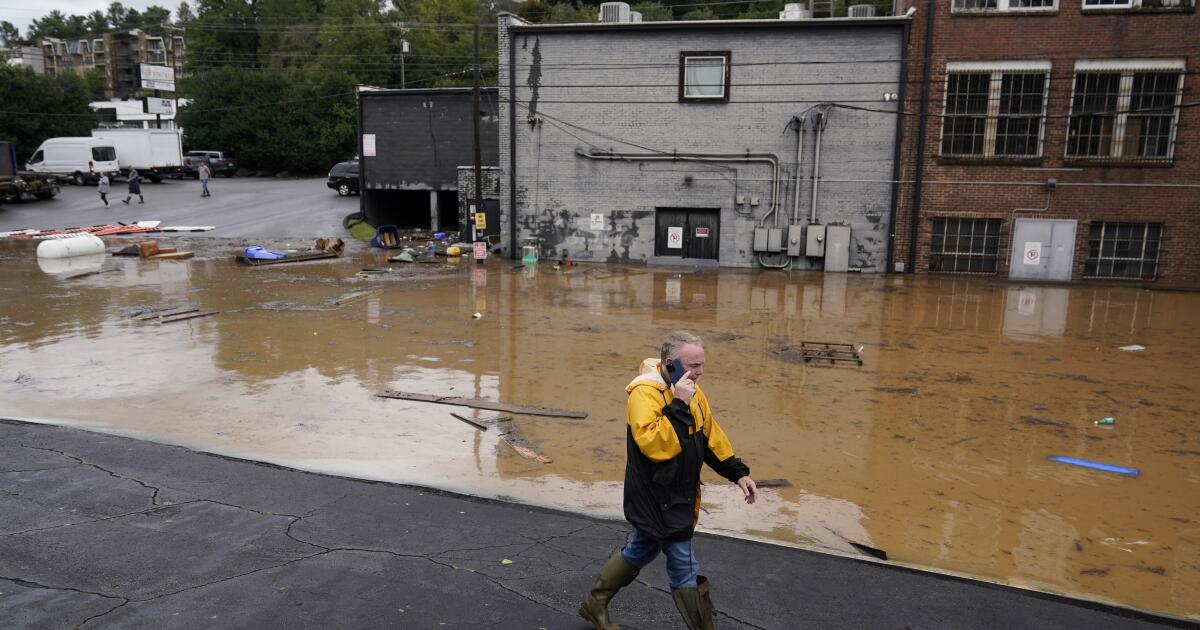To avert layoffs, L.A. council members seek cut in police hiring
Faced with a projected $1-billion shortfall, a key committee of the Los Angeles City Council moved forward Thursday with a plan to reduce the number of police officers and cancel Mayor Karen Bass’ plan for creating a homelessness unit within the fire department.
The council’s five-member budget committee voiced initial support for a slowdown in hiring that would leave the Los Angeles Police Department with about 8,400 officers by June 30, 2026, down from more than 8,700 this year and about 10,000 in 2020.
The move, if approved by the full City Council later this month, would be part of a much larger effort to restore positions targeted for elimination in the mayor’s $14-billion proposed budget.
The slowdown in police hiring would leave the LAPD with its lowest level of sworn staffing since 1995. But it would help save the jobs of 133 specialized civilian employees whose work includes processing DNA rape kits, analyzing fingerprints and taking photos of crime scenes.
Councilmember Tim McOsker, who sits on the budget committee, called the decision difficult, painful and regrettable — but also necessary to preserve the investigative work done by the civilian staffers.
If the city can protect those 133 specialists, reducing the number of officers may be a “pill that is worth swallowing,” said Councilmember Bob Blumenfield, another budget committee member.
“These are people that do all this incredibly important work for public safety, but they’re not sworn officers,” Blumenfield said.
The Los Angeles Police Protective League, which represents more than 8,700 officers, quickly voiced alarm about a reduction in sworn staffing. The union accused City Administrative Officer Matt Szabo, whose office helps prepare the budget, of seeking to “defund the LAPD to a point where it will literally endanger officers and our residents.”
“It’s hard to take the City seriously when they are sitting on a nearly $15-billion investment portfolio that could reasonably be used to alleviate the current budget crisis,” the union’s board said in a statement. “City leaders need to sharpen their pencils and stop trying to gut staffing at the LAPD.”
Clara Karger, a Bass spokesperson, said the mayor will continue engaging with the budget committee as it finalizes its spending proposals. “The Mayor continues to support the increases in LAPD hiring and the LAFD budget,” Karger said in a statement, “and looks forward to seeing the final recommendations of the Committee as it advances to the full Council.”
Bass’ proposed budget, released last month, calls for laying off about 1,600 civilian workers, including more than 400 at the LAPD. The job cuts would affect an array of agencies, including those responsible for trash removal, transportation programs and street light maintenance.
Councilmember Katy Yaroslavsky, who heads the budget committee, warned at the beginning of Thursday’s daylong meeting that she and her colleagues won’t be able to save every job.
“The reality is there is not a way to restore every position proposed for layoff. There just isn’t,” she said. “Our job today is to make the very difficult trade-offs we believe are most critical — trade-offs that reflect this council’s values, strengthen the delivery of core services and set the city on a path toward fiscal solvency.”
The proposals taken up by the committee are by no means a done deal. Chief Legislative Analyst Sharon Tso, the council’s top policy advisor, will come back to the committee next week with a full menu of strategies for cutting costs while preserving as many services as possible.
From there, the committee will send its recommendations to the full council, which must approve the budget by the end of May.
The city is facing its most significant budget crisis in about 15 years, caused largely by rising personnel costs, soaring legal payouts and a slowdown in the local economy. While the committee has been searching for ways to shield basic services from cuts, city negotiators have been trying to secure concessions, such as postponing scheduled pay raises, from the unions that represent public workers.
The salary increases are expected to add about $250 million to this year’s budget, and so far, no deals have been struck.
On Thursday, two of the largest cost-saving measures taken up by the committee were related to public safety.
The committee proposed slashing the number of LAPD recruits planned for the coming fiscal year to 240 from 480. Because the department is expected to lose 530 officers through resignations and retirements, that would result in an overall decrease in sworn staffing.
The committee also took steps to kill Bass’ proposal for adding 67 positions to the fire department to address issues stemming from the homelessness crisis. She had called for the hiring of 50 new firefighters and the creation of new street medicine teams — a rare example of investment during an otherwise gloomy fiscal year.
Critics contend there are less expensive ways to deploy street medicine teams than assigning the work to firefighters. Although such an expansion might have made sense in a normal budget year, it is difficult to support when city leaders are contending with sweeping reductions, Yaroslavsky said.
“I’m personally not prepared to lay off existing city employees who provide core city services … so that we can start new programs,” she said.
The committee also called for a reduction of up to $10 million to Bass’ Inside Safe program, which moves homeless residents into hotels, motels and other types of interim housing. As part of those cuts, council members are planning to require that some homeless people take on a roommate when they move into city-funded motels or other types of interim housing.
Yaroslavsky said she hoped the planned reduction to Inside Safe would save jobs in the planning, public works and police departments.
Council members are also hoping to transfer workers targeted for layoffs into vacant positions at agencies that are separate from the general fund, which pays for basic city services. Those agencies include the harbor, airports and the Department of Water and Power.








